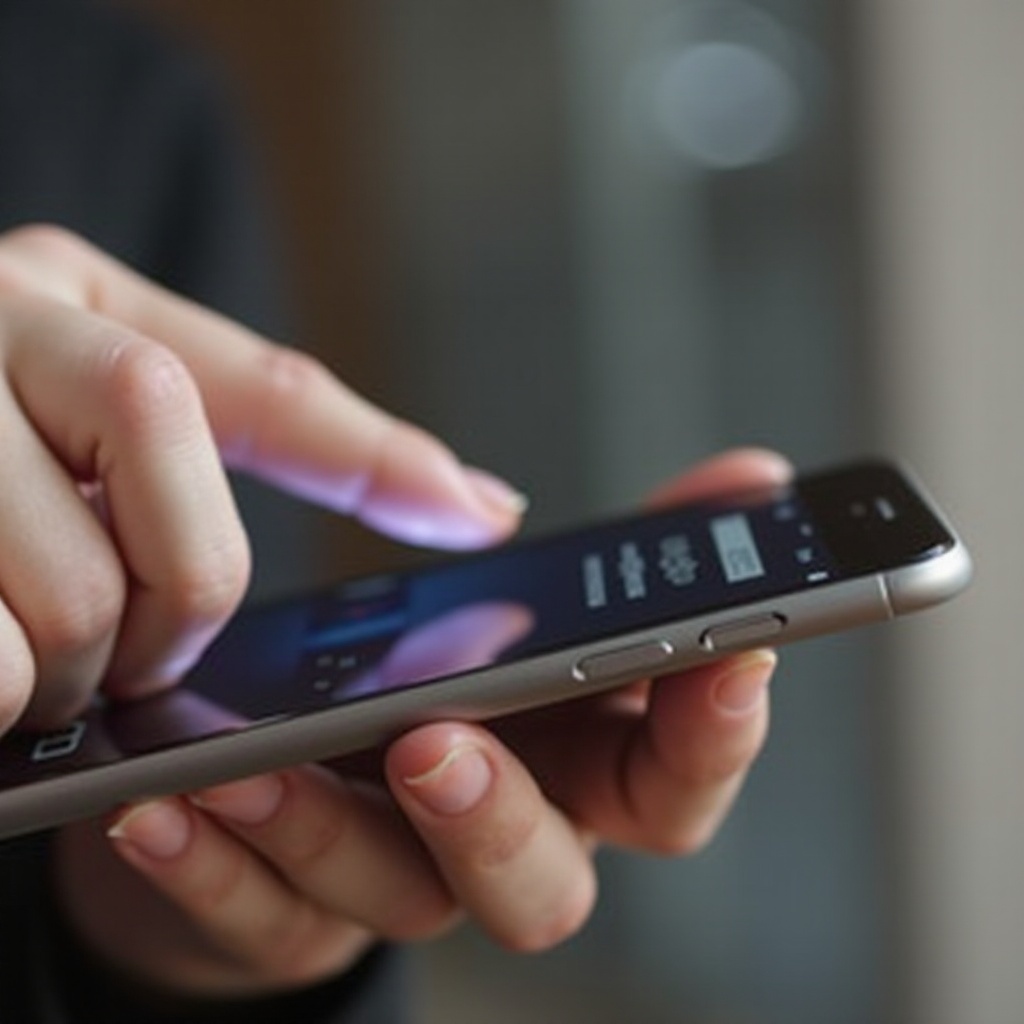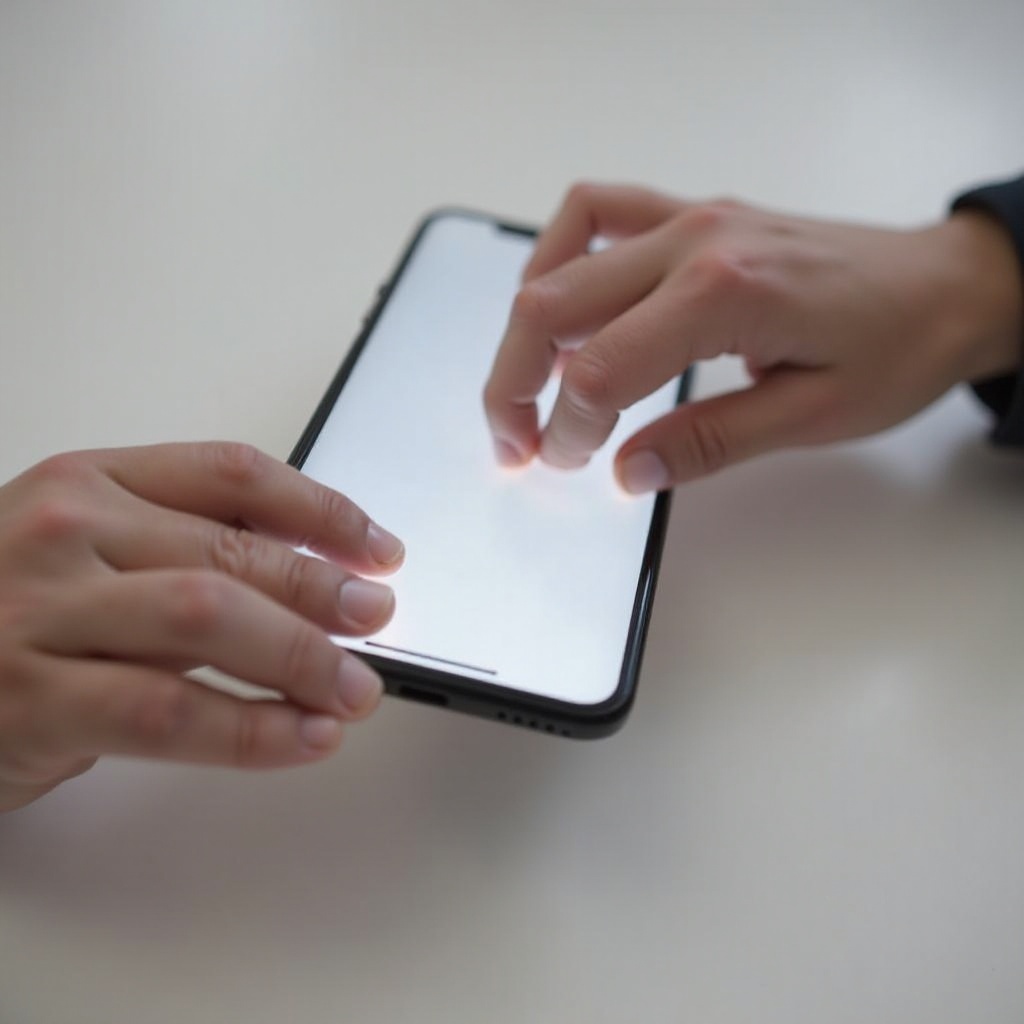Introduction
Experiencing issues with your iPhone’s touch screen can be frustrating. Whether your screen is unresponsive or acting erratically, knowing how to reset your touch screen on an iPhone can save you time and hassle. In this blog, we will guide you through several methods to troubleshoot and reset your iPhone’s touch screen, ensuring your device runs smoothly again.
This guide will cover everything from basic troubleshooting steps to more advanced solutions like updating iOS, resetting all settings, and even performing a factory reset. By following these instructions, you’ll be equipped to handle most touch screen issues with ease. Let’s dive in and solve those touch screen problems once and for all.

Understanding Touch Screen Issues
Touch screen issues on an iPhone can vary widely. Common problems include an unresponsive screen, delayed responses, or random touches that you did not initiate. These problems can stem from various sources, including software glitches, physical damage, or even dirt and debris on the screen.
A comprehensive approach to dealing with these issues involves understanding the potential causes. Software glitches are frequently resolved with updates or resets, while hardware problems may require professional repair. Additionally, screen protectors or cases might interfere with touch sensitivity, so checking and removing them could also help.
Before diving into advanced troubleshooting steps, it’s essential to diagnose whether the issue is related to software or hardware. If it’s a software issue, the following sections will provide the methods needed to address it. If you suspect hardware damage, jumping to professional help sections might be more appropriate.
Basic Troubleshooting Steps
Before proceeding to more complex solutions, try these basic troubleshooting steps:
- Clean the Screen: Use a microfiber cloth to remove any dirt or debris.
- Remove Accessories: Take off any screen protectors or cases that could affect touch responsiveness.
- Check for Updates: Ensure your iOS system is up to date as updates often fix bugs causing touch screen issues.
These simple measures can often rectify minor issues and are always worth attempting first.

Restarting Your iPhone
When basic troubleshooting does not resolve the issue, restarting your iPhone could be the solution. There are two types of restarts to consider: soft and hard reset.
Soft Reset
A soft reset is an easy way to clear temporary glitches. To perform a soft reset:
- Press and hold the side button until the power off slider appears.
- Drag the slider to turn off the iPhone.
- After the phone turns off, press and hold the side button again until you see the Apple logo.
Hard Reset
If the touch screen is unresponsive, a hard reset might be necessary. The steps are:
- Quickly press and release the Volume Up button.
- Quickly press and release the Volume Down button.
- Press and hold the side button until the Apple logo appears.
A hard reset forces your iPhone to restart and can rectify deeper system issues.
Updating iOS
Keeping your iPhone updated with the latest iOS version can resolve various bugs and enhance the overall performance, including touch screen functionality. To update iOS:
- Go to Settings > General > Software Update.
- If an update is available, tap Download and Install.
- Follow the on-screen instructions to complete the update.
Updating your iPhone can often solve issues that a simple restart or reset cannot. Always back up your data before initiating any updates.
Resetting All Settings
If restarting and updating don’t work, resetting all settings can be an effective solution. This will not delete your data, but it will reset system settings like Wi-Fi passwords and wallpaper back to default.
To reset all settings:
- Open Settings > General > Transfer or Reset iPhone > Reset.
- Tap Reset All Settings.
- Enter your passcode and confirm the action.
This step reverts all customizable settings to their default, potentially fixing touch screen issues linked to software settings.
Performing a Factory Reset
If all the previous methods fail, performing a factory reset might be necessary. This will erase all your data, so backing up is crucial.
Preparing for the Reset
- Backup Your Data: Connect your iPhone to Wi-Fi and use iCloud or iTunes to back up your data.
- Sign Out of Accounts: Sign out of apps and services to prevent any conflicts post-reset.
Steps to Factory Reset
- Open Settings > General > Transfer or Reset iPhone.
- Tap Erase All Content and Settings.
- Follow the on-screen instructions to complete the reset process.
After the reset, set up your iPhone as new or restore from your backup.
Seeking Professional Help
If none of the above solutions work, it might be time to seek professional help. Visit an Apple Store or an authorized service provider for a professional diagnosis and repair. Hardware issues, such as faulty screens or internal components, might require professional attention and potential replacement.
Professional technicians have the tools and expertise necessary to address complex hardware faults and ensure your iPhone’s touch screen is back to its optimal functionality.

Conclusion
Dealing with touch screen issues on your iPhone need not be daunting. By following the troubleshooting steps outlined in this guide, you can diagnose and resolve most touch screen problems. Whether it’s a simple restart, a software update, or a more comprehensive reset, these methods aim to restore your iPhone to full functionality.
Frequently Asked Questions
What do I do if my iPhone touch screen is unresponsive after a reset?
If your touch screen remains unresponsive after trying a reset, consider updating your iOS or visiting an Apple Store for professional assistance.
Will resetting my iPhone delete all my data?
Performing a factory reset will delete all data on your iPhone. Always back up your data before starting the reset process to prevent data loss.
How often should I reset my iPhone to avoid touch screen problems?
Regular resets are not necessary for maintaining touch screen functionality. However, occasional restarts and keeping your iOS updated can prevent software issues that affect the touch screen.
